The Lenin avenue in Kronstadt.
Every city of the former Soviet Union have a Lenin street or avenue. Usually it is a central street of the city. Kronstadt is no exception. The Lenin avenue is one of the central streets of Kronstadt, the essence of business and political life of the city. The bus station is here so all tourists and guests of Kronstadt start they city exploring from the Lenin avenue.
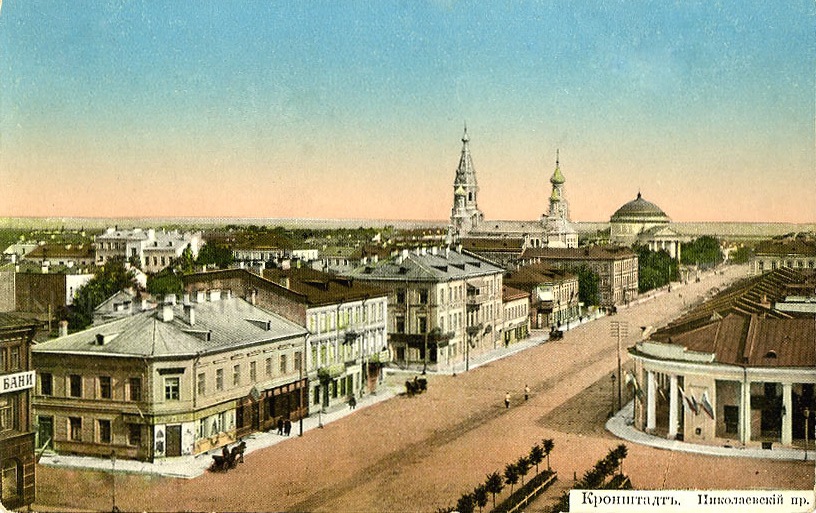 Kronstadt
Kronstadt
This street name was changed several times throughout the centuries of its history. Original name was the Lord’s street (Gospodskaya). Really, only rich merchants and officers had immovable property here. The most part of buildings here are former private merchant’s houses. Only notable part of Kronstadt society could live and work here. The commoners could walk only on the left side of the Lord’s street. The Gostiny dvor (the Merchants yard), the police office and local administration are on the left side of the street. In pre-revolutionary times commoners used only the street left side. It was an unwritten law. At the same times the wealthy merchants' houses were built on the right side of the street. Of course, after the revolution, this social separation was over.
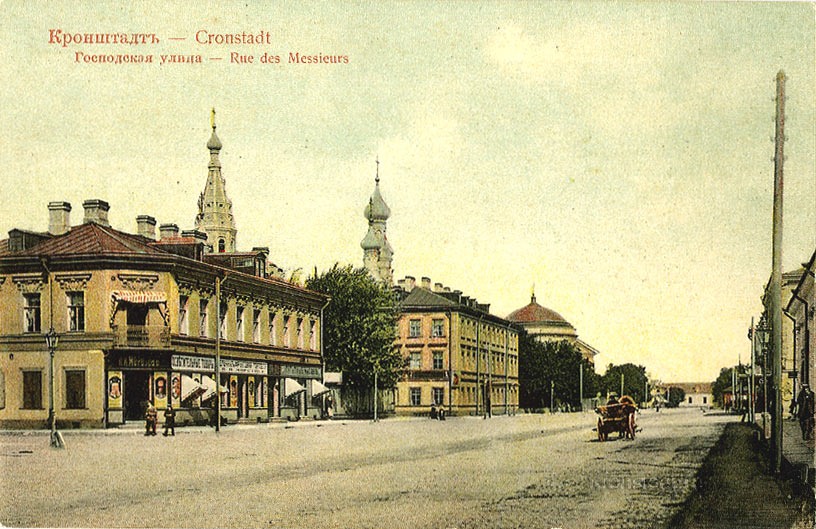
In the second half of the 19th century the Lord’s street (Gospodskaya) was renamed to the Nicholas avenue after Nicholas I, the Russian Emperor. It should say that Nicholas I was really worthy of such honor. He rebuilt the Kronstadt fortress in stone after the catastrophic flood of 1824, old forts were reconstructed and rearmed, several new forts were built (the Fort Alexander for example).
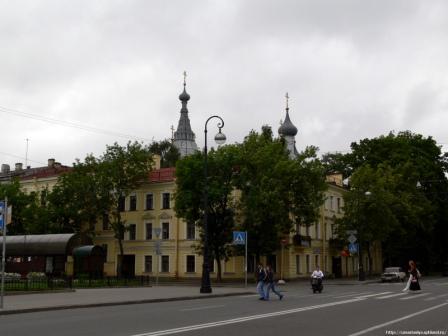
Kronstadt played a key role in all Russian Revolutions (1905-1907 and 1917) so the name of Vladimir Lenin, the main communist leader, was given to the main avenue of the city.
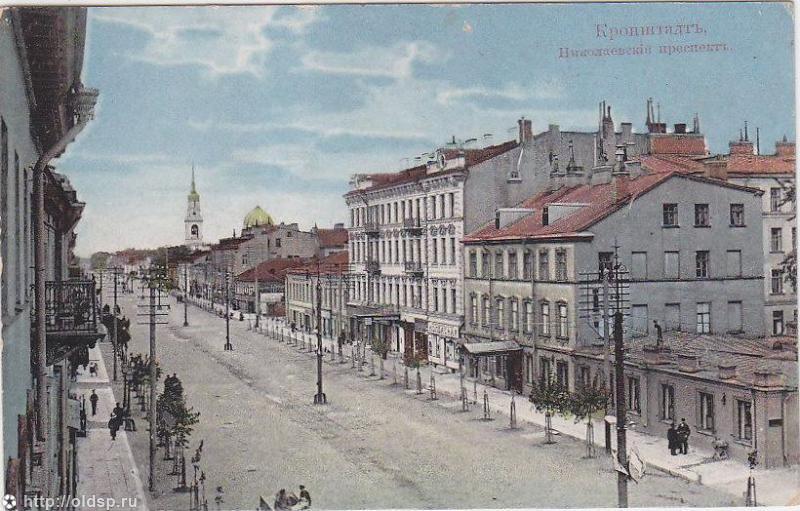
In fact the Lenin avenue in Kronstadt looks like a small copy of the Nevsky prospect (avenue) in St Petersburg. Before the Revolution tree churches were here: the Catholic cathedral (was blown up) and two Orthodox cathedrals.
Now we have only the one (the St Vladimir cathedral). The first wooden church was known on this place from 1728. That it was reconstructed several times. Finally, after the fire of 1874 the construction of the stone church started. The St Vladimir cathedral (Our Lady of Vladimir cathedral) was built in 1875-1879 according to the plan of David Grimm, the master of the Russian national and Byzantine architectural style. The cathedral was closed after the Revolution.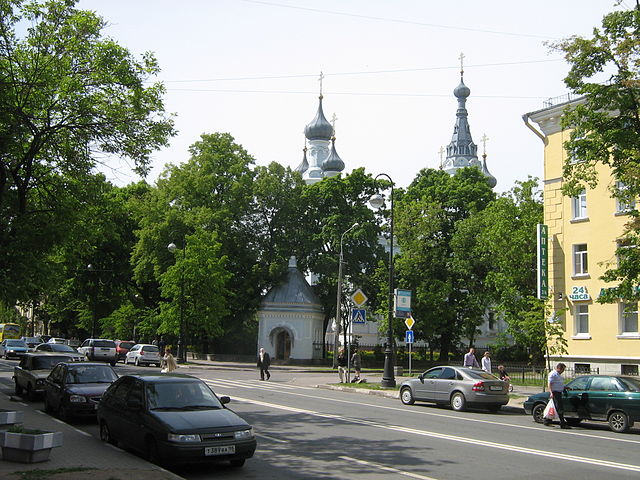
The local government trued to blown it up, but unsuccessfully. In 1950-1990-s the church was in ruins. In 1990 the cathedral was retuned to the Russian Orthodox church. Reconstruction finished in 2006.
The Gostiny dvor (the Merchants yard) was and is the largest shopping center of Kronstadt. It was built by V. Maslov in 1832.
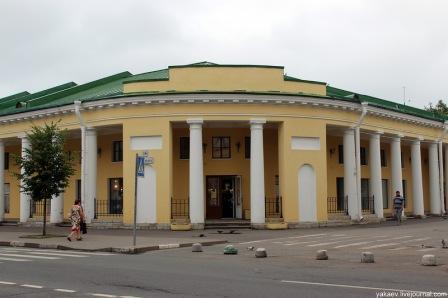 Gostiny dvor today
Gostiny dvor today
The place where the St. Andrew's Cathedral located till 1932 is in the heart the city - corner of the Sovetskaya street and the Lenin avenue. The St. Andrew's Cathedral was built in 1806-1817 by A. Zakharov. It was the main temple of Kronstadt.
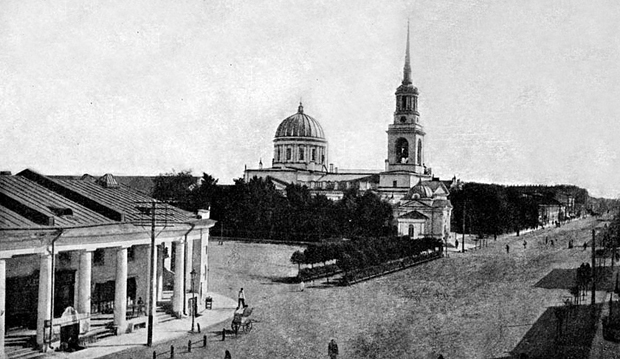 st Andrew cathedral in Kronstadt
st Andrew cathedral in Kronstadt
St. John of Kronstadt (Ivan Sergiev) was the dean of this cathedral. He is one of the most revered saints of the Russian Orthodox Church. John of Kronstadt (1829-1908) was a Russian Orthodox Christian presbyter and a member of the synod of the Russian Orthodox Church. He was a striking, unconventional personality, deeply pious and immensely energetic. He was one of the most internationally famous and beloved Orthodox Christian leaders of his time. From 1855 he worked as a priest in Saint Andrew's Cathedral, Kronstadt, the naval base on the outskirts of St Petersburg. 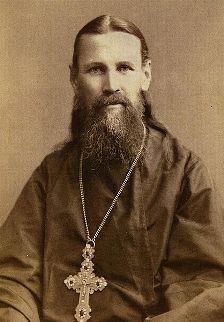 Here he committed himself to charity, especially to those who were remote from the Church, and travelled extensively throughout the Russian empire. He was a member of the conservative Union of the Russian People, but did not commit himself politically. In the early 1890s Father John became well known, and people from all over Russia came to him every day in thousands. Even the dying Tsar Alexander III, in 1894, summoned him to LivadiaPalace so he could be served communion by John. The bishops treated him with high respect. He was already greatly venerated at the time he died, on 20 December 1908. In 1909 Nicholas II wrote an order to establish commemoration of St John in the Church. Following it the Holy Synod issued an edict to commemorate Father John annually at the day of his death.
Here he committed himself to charity, especially to those who were remote from the Church, and travelled extensively throughout the Russian empire. He was a member of the conservative Union of the Russian People, but did not commit himself politically. In the early 1890s Father John became well known, and people from all over Russia came to him every day in thousands. Even the dying Tsar Alexander III, in 1894, summoned him to LivadiaPalace so he could be served communion by John. The bishops treated him with high respect. He was already greatly venerated at the time he died, on 20 December 1908. In 1909 Nicholas II wrote an order to establish commemoration of St John in the Church. Following it the Holy Synod issued an edict to commemorate Father John annually at the day of his death.
He was canonized by the Russian Orthodox Church Outside Russia in 1964, and by the Russian Orthodox Church in 1990. Archbishop John Maximovitch of Shanghai and San Francisco (later glorified as a Saint, as well) played an active role in preparation of St. John's canonization. His life and work are commemorated on the feast days of December 20 and October 19. Many churches around the world and Ioannovsky Convent, the second largest monastic community in St Petersburg are dedicated to John of Kronstadt.
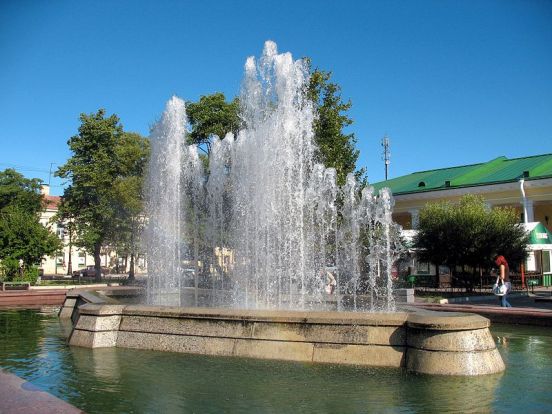
However the St. Andrew's Cathedral was blown up in 1932. Later, the Monument to V. Lenin was erected on this place. In 2003 monument to Vladimir Lenin was moved to another place on the same street, closer to the local administration building.
The city police office located on the Lenin avenue from 19th century till this day.
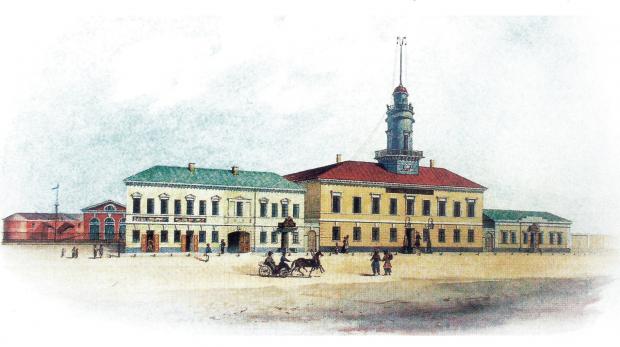
One of the most interesting building here is the Martynov community center. The five floors building till the XX century was one of the biggest in Kronstadt.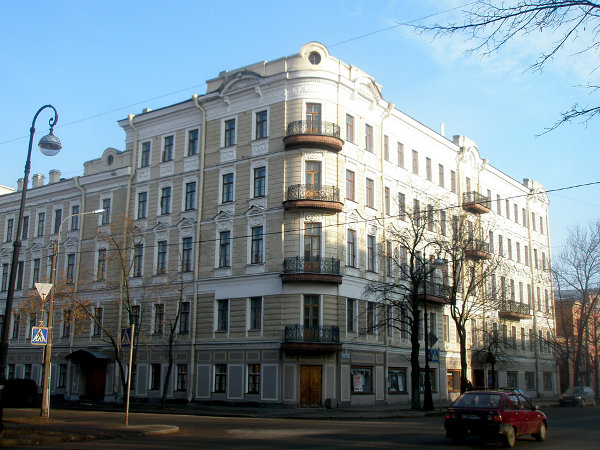 the Martynov community center
the Martynov community center
It was built in 1878-1880 for the Nikitins brothers. They were one of the richest merchants of Kronstadt. Big concert hall used for balls and concerts. After the revolution it was nationalized and converted to the Kronstadt community center. During the Kronstadt mutiny, the Provisional Revolutional Committee had their office here. Later the community center was named after E. Martynov, one of the fighters for the Soviet power.
The Lenin Avenue would not be the same without a monument to V. Lenin.
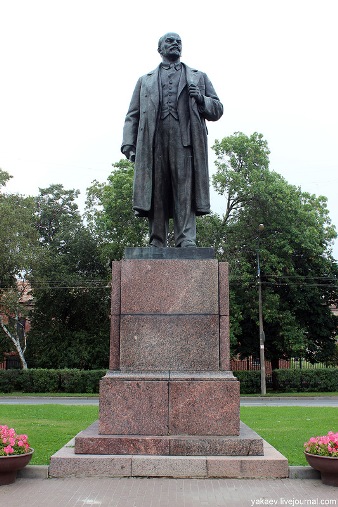
The monument was opened in 1955. It is remarkable that Vladimir Lenin never visited Kronstadt during his life.
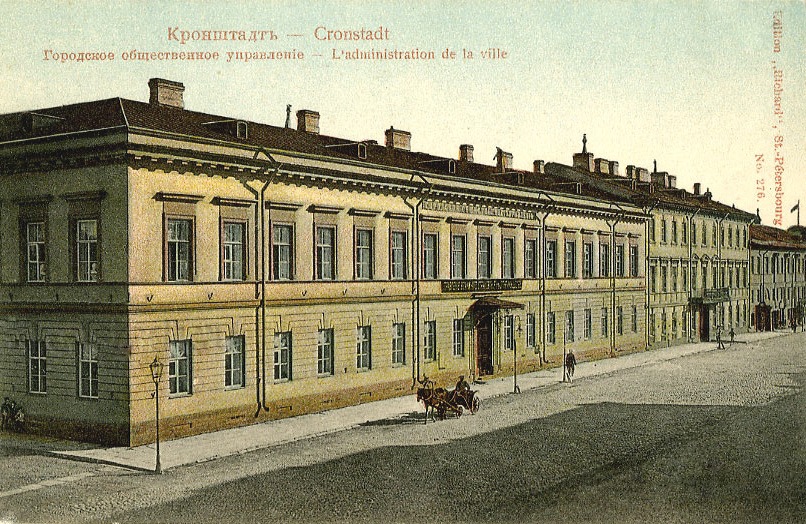
The local administration building is situated close by the Lenin monument. History of this building is very interesting. In 1833-1837 famous architect Alexander Brullov constructed the Kronstadt parliament house (the city Duma). Kronstadt was a separated region in the Russian Empire. So there was a local parliament, which was broken up after the Revolution.
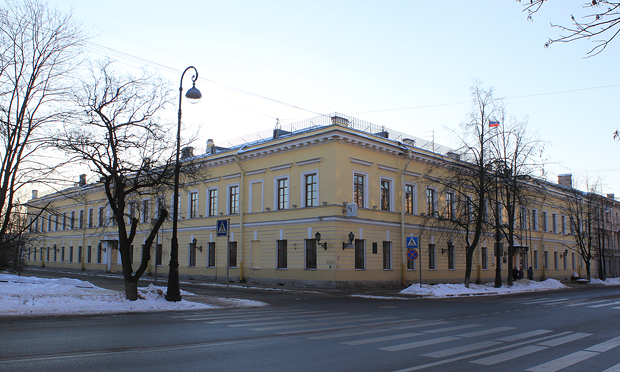
Now Kronstadt is only the district of St Petersburg and the local administration has their office here.
Kronstadt children school of arts is allocated here too.
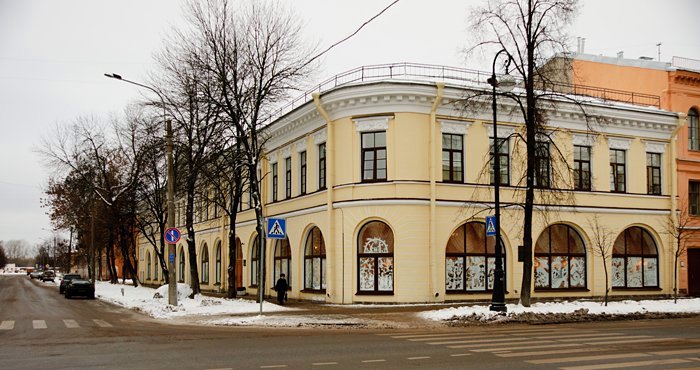
The Submariners public garden finishes the Lenin avenue panorama.
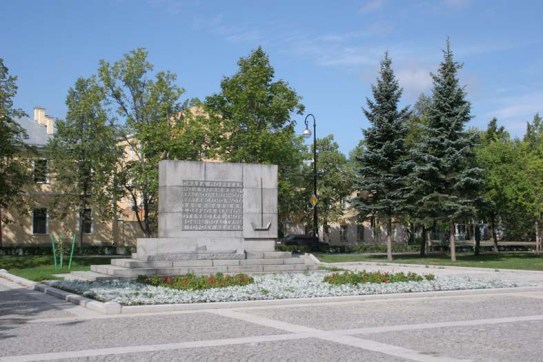
There is a Monument to the submariners - members of the Battle of Leningrad. Great number of enemy’s ships were sunk by the Kronstadt submariners. The naval submarine base is situated just nearby.
The Kronstadt sea gauge is in immediate proximity of the Lenin avenue.




